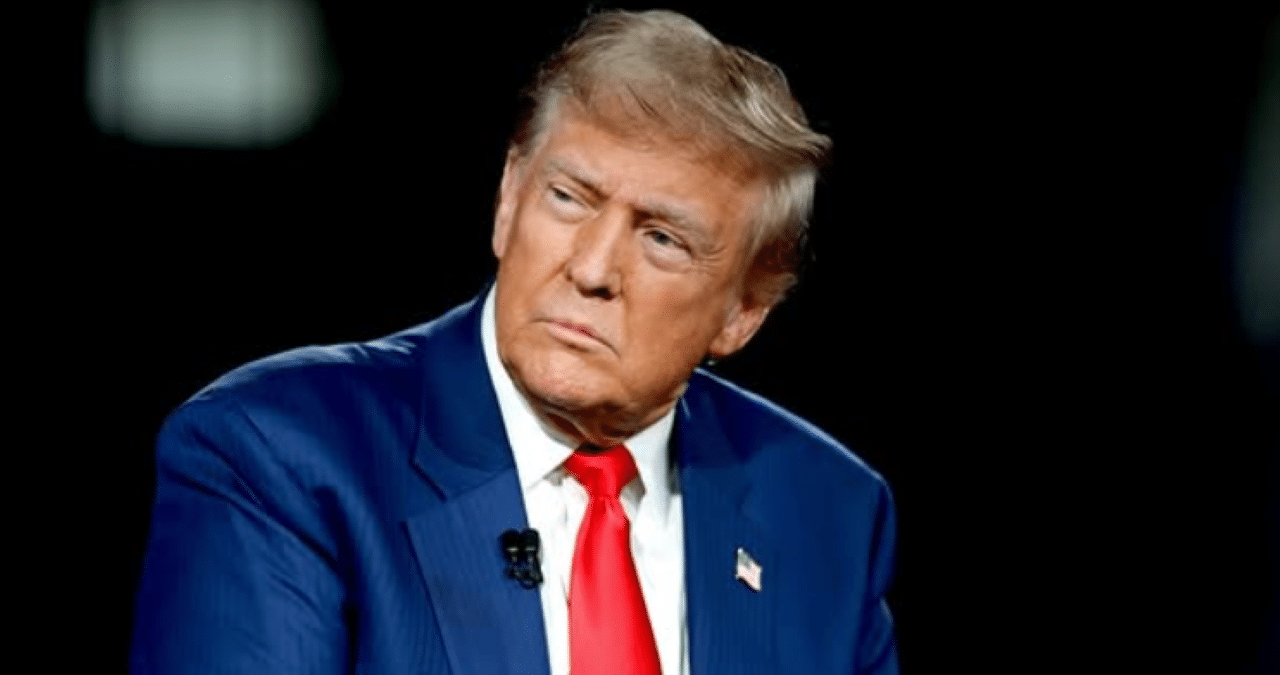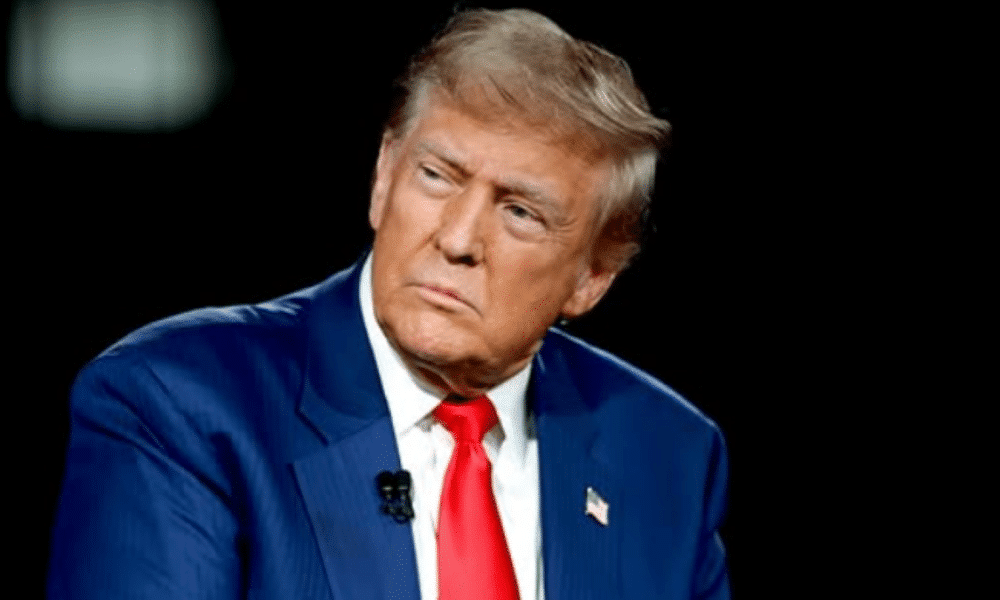
The trade war between the United States and China escalated sharply on Wednesday, April 9, when President Donald Trump announced a dramatic increase in tariffs on Chinese goods, jumping from 104% to 125%, effective immediately. Shared through his Truth Social platform, the decision marks a new peak in tensions between the world’s two largest economies, following weeks of threats and counter-measures. Trump justified the move by citing China’s “lack of respect” for global markets, asserting that Beijing can no longer exploit the United States and other nations in a “sustainable or acceptable” manner. The announcement comes just days after a sweeping global tariff hike that imposed rates of up to 50% on over 60 countries, sparking widespread reactions in international trade circles. In the same post, Trump unveiled a surprising 90-day pause on reciprocal tariffs for other nations, reducing them to 10%, a move he linked to over 75 countries reaching out to negotiate with U.S. officials. This dual strategy aims to balance economic pressure with diplomatic openings, even as financial markets reel from uncertainty.
China retaliated swiftly, raising its tariffs on U.S. goods from 34% to 84% within hours of Trump’s initial 104% rate taking effect, a figure now overshadowed by the 125% hike. Targeting American agriculture, energy, and manufacturing sectors, Beijing’s response deepens a conflict that has already disrupted global supply chains. Meanwhile, the 90-day pause offers temporary relief to countries like Canada, Mexico, and Japan, previously hit with tariffs ranging from 11% to 49%. This rollback follows a steep drop in U.S. stock markets, with the Dow shedding 320 points and the S&P 500 falling 1.57% in the last trading session before the announcement. Trump’s tariff policy, a cornerstone of his economic agenda since his first term, now enters uncharted territory, with the average U.S. tariff rate climbing from 2% to 24%, the highest in a century.
The immediate fallout from the 125% tariff on China is rippling through global trade networks. Electronics, textiles, and consumer goods—key imports from China—face steep price increases in the U.S., impacting retailers and households alike. In 2024, China accounted for $439 billion in exports to the United States, making it the second-largest U.S. trading partner after Mexico. The new tariff, layered atop existing rates from Trump’s earlier tenure and those retained by the Biden administration, pushes the cost of Chinese imports to unprecedented levels, prompting companies to explore alternatives in countries like Vietnam and India. As the trade landscape shifts, the 90-day pause offers a brief reprieve for other nations, though questions linger about its long-term effects.
- China tariffs: 125%, effective April 9.
- Other countries: 10% reciprocal rate for 90 days.
- U.S. market impact: Dow down 320 points, S&P 500 off 1.57%.
“We’re taking historic action to help American workers, miners, families, and consumers. We’re ending Joe Biden’s war on beautiful, clean coal once and for all, and we’re gonna put the miners back to work.” –President Donald J. Trump
pic.twitter.com/u7B7Cx6Wfv
— The White House (@WhiteHouse) April 9, 2025
China’s swift retaliation
Beijing wasted no time in responding to Trump’s tariff hike, boosting its own rates on U.S. imports from 34% to 84% on April 9, hours after the initial 104% U.S. tariff took effect. The escalation to 125% prompted further defiance, with China’s Commerce Ministry labeling the U.S. move “one mistake piled on another.” Key American exports like soybeans, pork, poultry, crude oil, and liquefied natural gas now face the brunt of these measures. Last year, U.S. exports to China totaled $144 billion, and the new tariffs threaten significant losses for American farmers and energy producers, echoing the $27 billion hit taken during the 2018-2020 trade war under Trump’s first administration.
China’s retaliation targets politically sensitive regions in the U.S., such as Midwestern farming states, which supported Trump in recent elections. Unlike other nations that opted for dialogue, Beijing has doubled down on confrontation, refusing to bow to demands on issues like fentanyl trafficking and currency manipulation. This hardline stance could drive up U.S. inflation, particularly in food and fuel prices, as supply chains adjust to the loss of Chinese demand for American goods.
90-day pause: a temporary lifeline
Announced alongside the China tariff hike, the 90-day pause slashes reciprocal tariffs on over 75 countries to 10%, effective April 9. Trump tied the decision to diplomatic outreach from nations like Canada, Mexico, Japan, and the European Union, which engaged the U.S. Departments of Commerce, Treasury, and the USTR to address the global tariff surge initiated on April 2. Previously, Canada and Mexico faced 25% rates, Vietnam 46%, and Cambodia 49%, all now reduced to 10% for the next three months.
The pause aims to avert an immediate economic downturn in the U.S., where fears of recession loomed after the April 2 tariff announcement, dubbed “Liberation Day” by Trump. Stock markets showed mixed reactions on April 9, with some recovery in early trading, but analysts caution that 90 days may not suffice to resolve deep-seated trade disputes, especially with China excluded from the relief.
Global markets feel the strain
Financial markets shuddered as the U.S.-China trade war intensified. On April 8, the Dow Jones Industrial Average dropped 320 points, the S&P 500 fell 1.57%, and the Nasdaq slid 2.15%, driven by fears of disrupted supply chains and rising costs. The April 9 announcement of the 125% China tariff and the 90-day pause brought a tentative stabilization, though volatility persists. Companies like Apple, Nike, and GE HealthCare, heavily reliant on Chinese manufacturing, saw share prices dip, while retailers like Walmart revised profit forecasts downward due to higher import costs.
The U.S. dollar strengthened against currencies like the Mexican peso and Canadian dollar, offering some cushion, but consumer goods prices are climbing. Electronics and apparel, with 37% of U.S. footwear imports from China and 30% from Vietnam, face immediate increases, while automotive and energy sectors brace for secondary effects despite the temporary relief for Canada and Mexico.
Roots of the trade conflict
The U.S.-China trade war traces back to Trump’s first term, when tariffs of up to 25% were levied on Chinese goods in 2018. The Biden administration largely preserved these, raising the average to 20.8%, but Trump’s return in 2025 reignited the battle. February saw 10% tariffs on China, followed by 20% in March and 34% in April, before the April 2 global tariff hike pushed rates as high as 50%. The jump to 104% and now 125% on China marks a historic escalation.
Other nations faced similar pressure: Canada and Mexico at 25% in February, the EU at 20%, and Vietnam at 46% by April 2. The 90-day pause to 10% reflects a shift from blanket aggression to selective relief, though the focus remains on pressuring China, which has countered with rates rising from 15% in 2024 to 84% this week.
U.S. industries hit hardest
Several U.S. sectors are reeling from the tariff escalation. Electronics, reliant on Chinese-made smartphones and laptops, face cost spikes, with retailers like Best Buy signaling price hikes. Agriculture, still recovering from 2018 losses, takes another blow as China’s 84% tariffs target soybeans and pork, critical for states like Iowa and Illinois. The automotive industry, intertwined with Canada and Mexico, anticipates higher costs despite the pause, with parts crossing borders multiple times.
Consumer staples like clothing and footwear, heavily sourced from China and Vietnam, will see price tags rise, impacting household budgets. Energy costs, tied to Canadian oil imports, could climb by up to $0.50 per gallon, adding pressure to an already strained economy.
- Electronics: price increases imminent.
- Agriculture: soybean and pork exports hit.
- Automotive: supply chain costs up despite relief.
Global reactions unfold
Beyond China, other nations responded variably to Trump’s tariffs. Canada, which imposed CAD$30 billion in retaliatory tariffs in March, paused a planned CAD$125 billion round after the 90-day relief. Mexico, set to counter on April 9, held off but keeps threats alive. The European Union, facing 20% rates, will vote on April 10 to reinstate 2018-style tariffs on U.S. goods like bourbon and motorcycles.
Vietnam and Cambodia, previously at 46% and 49%, welcomed the 10% rate and seek talks, while Turkey, also at 10%, expects minimal disruption due to diversified exports. Brazil, with a reciprocal law passed in March, awaits the 90-day outcome before acting, balancing trade ties with the U.S.
Trump’s tariff playbook
Raising China’s tariffs to 125% while pausing others at 10% underscores Trump’s dual-track approach: punishing rivals and coaxing allies into talks. He frames tariffs as a fix for the U.S. trade deficit, which hit $1.2 trillion in 2024, and a spur for domestic manufacturing. The White House projects $1.2 trillion in tariff revenue over the next decade to fund security and industrial priorities.
Critics, including economists and some Republicans like Senator Chuck Schumer, warn of inflationary risks and limited job gains. The 90-day pause is seen as a tactical retreat to avoid immediate economic collapse, though China’s exclusion signals an unrelenting focus on Beijing as the primary target.
Timeline of tariff changes
Tariffs in 2025 have shifted rapidly under Trump’s direction. February brought 25% rates on Canada and Mexico and 10% on China, followed by 20% in March and 34% in April. The April 2 global hike spiked rates to 50%, with China at 34% atop prior levies. April 9 saw China jump to 125%, while others dropped to 10% for 90 days.
- April 9: China at 125%, others at 10% (pause begins).
- July 8: pause ends unless extended by deals.
- Ongoing: potential adjustments based on talks or retaliation.
This timeline keeps China under pressure while offering others a negotiation window.
Consumer costs climb
American consumers are already feeling the pinch. Electronics like smartphones and laptops face looming price hikes, with retailers adjusting forecasts. Mexican imports like avocados and fruits, accounting for 50% of U.S. fruit and nut imports, will cost more despite the pause. Gasoline, reliant on Canadian oil (70% of Midwest imports), could rise by $0.50 per gallon.
Annual household costs from tariffs on China, Mexico, and Canada are estimated at $1,072, with automotive expenses adding up to $2,700 per vehicle. The 90-day relief softens the blow, but the China standoff keeps long-term prices uncertain.
Ongoing trade talks
Over 75 countries launched talks with the U.S. post-April 2 tariff surge. Japan and South Korea, at 10%, aim for permanent deals, while the EU offers to cut car tariffs from 10% to 2.5% and boost U.S. LNG purchases. Canada and Mexico, leveraging USMCA ties, lead efforts to dodge a 25% return on July 8.
China, excluded from the pause, resists talks, sticking to retaliation. The 90-day window, ending July 8, will determine if reciprocal tariffs revert or if bilateral agreements lock in lower rates, shaping global trade for years ahead.






